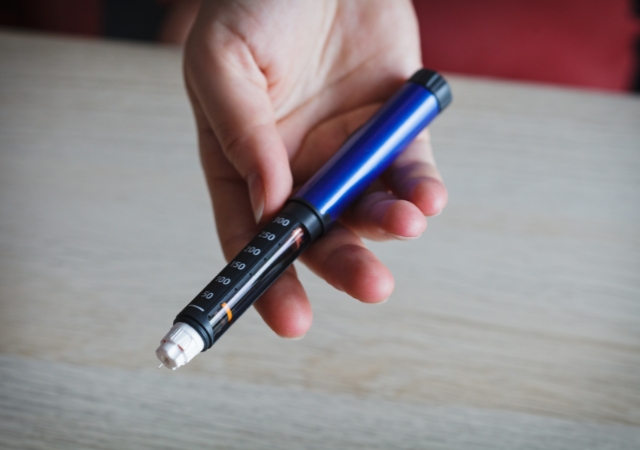You’ve probably heard of the word “CGM” before. If you haven’t and you have stumbled upon this guide as a newbie to the diabetes world, then first, I’d like to welcome you to the club we all never wanted to be a part of, but is amazing nonetheless. Now in case you are unfamiliar, a CGM refers to a Continuous Glucose Monitor.
What is a CGM?
Continuous glucose monitoring allows you to gain a better, more in depth picture of what your blood sugar levels really are doing. This can help you to not only make better choices when it comes to treatment options, but even help to prevent severe hypo and hyperglycemic episodes.
For someone that doesn’t have diabetes, their body is able to track its own glucose levels in the body 24/7 to make sure it secretes just the right amount of insulin at the right time. To successfully manage type 1 or type 2 diabetes it requires constant dosing decisions on when to take insulin, or oral medications. You must take into account the food you’ve eaten, the time this food begins to cause a rise in your blood sugar as well as any activities you may have participated in during the day.
As you can see, it can all be rather overwhelming, and not to mention pretty time consuming. That is where a CGM can come in handy.
I advise reading the following articles:
How Does a CGM Work?
A CGM provides you with a way to measure your blood sugar levels over the period of 24 hours without the constant finger sticks. A sensor is inserted just underneath the skin to measure these levels from the fluid in your tissues. It is then attached to a transmitter which allows the sensor to relay this information to your monitoring device or receiver. You can receive alarms on the device if your blood sugar goes too high or drops too low. The latest CGM system and sensor from Medtronic, the Enlite, can even alert you before you’ve reached your target.
Enlite Offers Protection, So You Can Worry Less
The rollercoaster that comes along with the frequent lows and highs can really take a toll on you both physically and emotionally. What Enlite offers users is protection to help prevent these frequent highs and lows. When used in combination with the Medtronic insulin pumps, Enlite offered a hypoglycemia detection rate of 93%. This is a 31% improvement from the previous Soft-sensor glucose sensor version. You can order Enlite on Amazon.
Size
One of the most noticeable differences in the Enlite sensor is its smaller size. It features a smaller much more flexible sensor that offers you almost a pain free insertion. More than 85% of users said the Enlite felt pretty comfortable when worn.
Easier Insertion
The previous soft-sensor version had one major downfall, it offered full visibility of the needle. Pain associated with insertion of this version was increased because of this. While the needle of the Enlite is much smaller than the Soft-sensor, it offers a hidden needle, which takes some of the anxiety and fear associated with insertion. The new 90-degree angle for insertion also provides a more comfortable experience. More than 75% of users said that the new device was much easier to use.
How Are CGM Readings Different from Meter Readings?
The reading from your meter are the blood glucose levels in your blood while the CGM readings are measurements of glucose in the fluids which surround the cells in your tissues. This is known as the interstitial fluid. The majority of the time, glucose travels first to your blood and then to the interstitial fluid. Because of how quickly glucose can move, the readings from your meter and CGM will more often than not match, but they should be pretty close.
However, if your blood glucose levels are climbing or falling too quickly, you might see a bigger difference in the comparison of both of these numbers. After you’ve eaten, taken a bolus of insulin or the up or down arrow is showing on your pump, you may notice a larger difference, but don’t worry this is normal. It’s important that when these occasions occur, you test your blood glucose with your meter first.
Data Trends
We’ve discussed the presence of ‘trends’ in blood glucose data before, but are they really? When you are using a CGM system, you want to focus on the trends in your levels. These trends include the path they are taking (higher or lower), and how quickly this is happening. You will want to focus more on the trends than on your actual numbers.
Personal Settings to Maximize Your CGM Experience
One of the most beneficial features of using a CGM is the settings you can take advantage of, by personalizing them to your unique management needs. You should speak to your healthcare provider first to ensure the settings you establish are the ones you should be using. There are five different categories for alerts and alarms that you can set.
These include:
- High & Low Glucose Notifications
- Predictive Notifications
- Change of Rate Notifications
- Threshold Suspend Alarm
- Calibration Notifications
Low Glucose Notification
This notification can be set to notify you when your levels reach a certain target. You can establish your own range from 40-390 to make managing your diabetes much easier. Most users love this feature for when they are sleeping overnight. Often times it can be downright challenging to wake yourself up when you are experiencing an episode of hypo or hyperglycemia.
Predictive Notifications
You can predict a low or high and treat or correct accordingly before they actually occur. Before you reach a certain pre-established level, you can set your predictive alert to go off 5 to 30 minutes before anything occurs. This type of setting comes in handy for virtually anyone, but if you find yourself incredibly busy throughout the day at work or play, having a predictive notification alerting you to a low or high before it occurs can help keep your day running smoothly.
Change of Rate Notification
A changing rate notification lets you know that your blood glucose is either falling or rising. This is a handy alert for understanding more about how your levels are affected by factors such as insulin, food, and increased activity. If you notice that you often are low after exercising, setting a change of rate notification can help you prevent these lows from happening in the first place. This heads up on your blood glucose levels will give you the ability to take action much quicker.
Further reading:
Threshold Suspend Alarm
If your sensor reading falls below a certain programmed threshold, this alarm will stop all delivery of insulin automatically. When this occurs, your pump will alarm with a loud siren. It will continue to alarm loudly until the alarm is properly cleared on the screen by pressing both the ESC and ACT buttons.
PLEASE NOTE:
If you do not manually clear the alarm your delivery of insulin will remain suspended for 2 hours. Your basal insulin rate will restart for 4 hours no matter what your sensor reading is.
When you Clear the Alarm
You will be given the option to either restart your basal or suspend all delivery. When your basal is restarted, your insulin pump will now use the Low Repeat time setting to suspend if your glucose levels are still too low.
Many users love the idea of the Threshold Suspend for the night time. A siren will alarm loudly so that you can test your blood glucose levels first. We hope you enjoyed this review and leave a comment below if you liked this product.
Calibration Notification
This notification reminds you that you need to calibrate your sensor by entering a new blood glucose meter level. You have the option of setting two separate notifications under this feature, the Cal Repeat which is the timeframe after you missed a calibration to be reminded. Cal Reminder lets you know how long it is until your next calibration time.
Enlite Compatibility
The Enlite Sensor is compatible with the following Medtronic Insulin Pumps:
- MiniMed 670G
- MiniMed 630G
- MiniMed 530G
TheDiabetesCouncil Article | Reviewed by Dr. Sergii Vasyliuk MD on May 23, 2020






